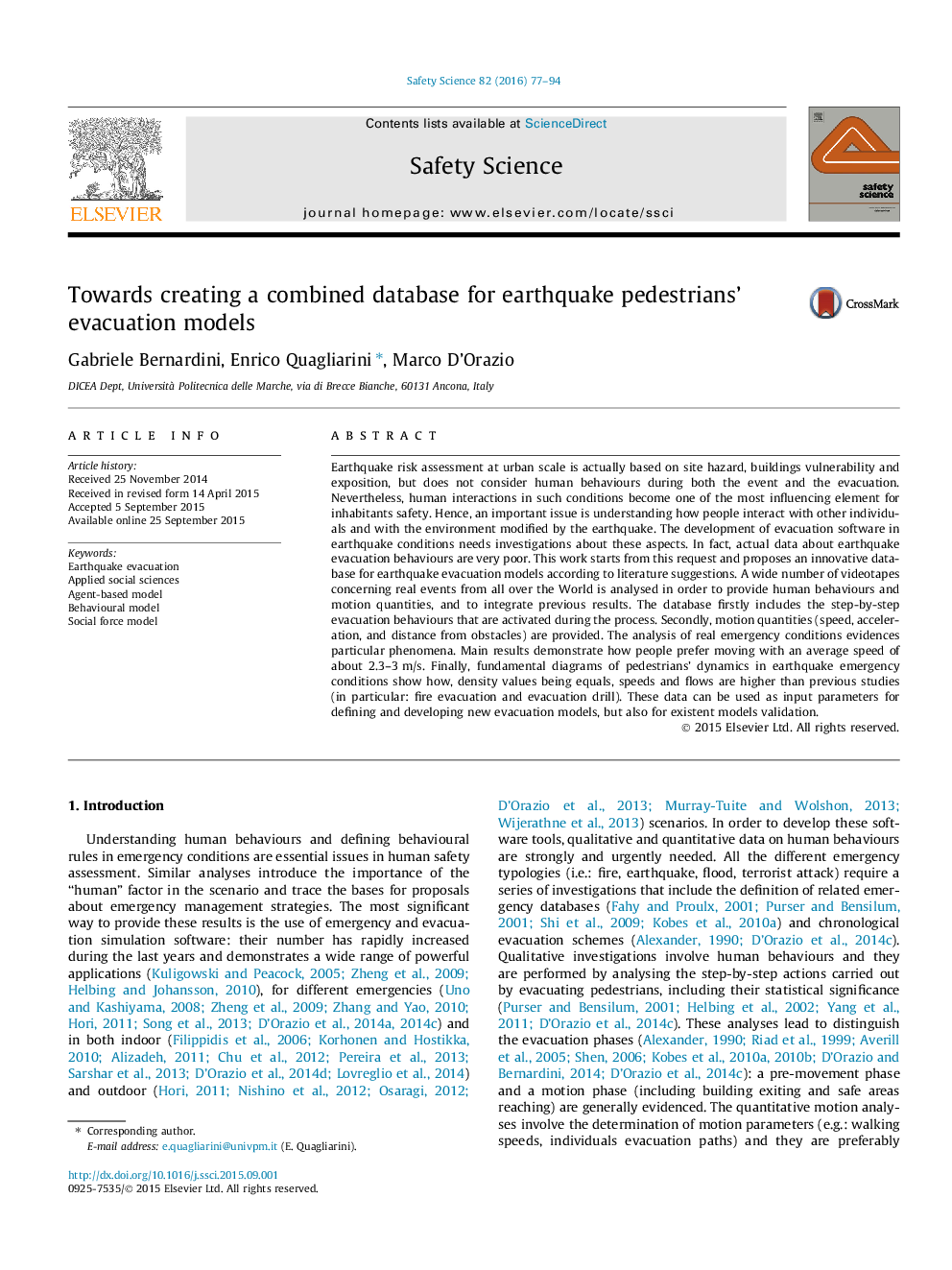| کد مقاله | کد نشریه | سال انتشار | مقاله انگلیسی | نسخه تمام متن |
|---|---|---|---|---|
| 6975554 | 1453389 | 2016 | 18 صفحه PDF | دانلود رایگان |
عنوان انگلیسی مقاله ISI
Towards creating a combined database for earthquake pedestrians' evacuation models
ترجمه فارسی عنوان
در جهت ایجاد یک پایگاه داده ترکیبی برای مدل تخلیه عابرین پیاده زلزله
دانلود مقاله + سفارش ترجمه
دانلود مقاله ISI انگلیسی
رایگان برای ایرانیان
کلمات کلیدی
تخلیه زلزله، علوم اجتماعی کاربردی، مدل مبتنی بر عامل، مدل رفتاری، مدل نیروی اجتماعی،
موضوعات مرتبط
مهندسی و علوم پایه
مهندسی شیمی
بهداشت و امنیت شیمی
چکیده انگلیسی
Earthquake risk assessment at urban scale is actually based on site hazard, buildings vulnerability and exposition, but does not consider human behaviours during both the event and the evacuation. Nevertheless, human interactions in such conditions become one of the most influencing element for inhabitants safety. Hence, an important issue is understanding how people interact with other individuals and with the environment modified by the earthquake. The development of evacuation software in earthquake conditions needs investigations about these aspects. In fact, actual data about earthquake evacuation behaviours are very poor. This work starts from this request and proposes an innovative database for earthquake evacuation models according to literature suggestions. A wide number of videotapes concerning real events from all over the World is analysed in order to provide human behaviours and motion quantities, and to integrate previous results. The database firstly includes the step-by-step evacuation behaviours that are activated during the process. Secondly, motion quantities (speed, acceleration, and distance from obstacles) are provided. The analysis of real emergency conditions evidences particular phenomena. Main results demonstrate how people prefer moving with an average speed of about 2.3-3Â m/s. Finally, fundamental diagrams of pedestrians' dynamics in earthquake emergency conditions show how, density values being equals, speeds and flows are higher than previous studies (in particular: fire evacuation and evacuation drill). These data can be used as input parameters for defining and developing new evacuation models, but also for existent models validation.
ناشر
Database: Elsevier - ScienceDirect (ساینس دایرکت)
Journal: Safety Science - Volume 82, February 2016, Pages 77-94
Journal: Safety Science - Volume 82, February 2016, Pages 77-94
نویسندگان
Gabriele Bernardini, Enrico Quagliarini, Marco D'Orazio,
